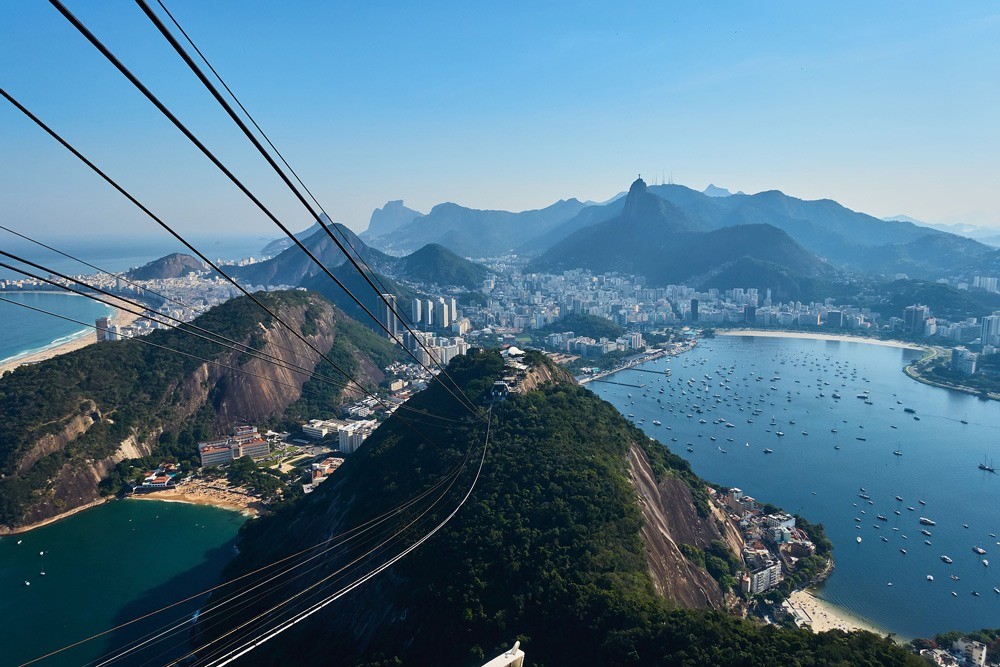
Seamless air travel to Rio de Janeiro is possible when you plan ahead, especially during peak season.
Recognized globally as the Cidade Maravilhosa (Marvelous City), Rio de Janeiro, Brazil is a gleaming metropolis surrounded by lush rainforests and pristine sandy beaches.
Embracing a laid-back atmosphere, Rio is a popular South American destination that attracts over two million visitors during the peak season months of December through February.
Rio de Janeiro International Airport serves as the city’s main port of entry and is the primary airport utilized for general aviation (GA) operators.
If you plan to operate to Rio de Janeiro, here’s what you need to know:
Main Airport
Rio de Janeiro International Airport
[IATA: GIG, ICAO: SBGL]
Rio de Janeiro International Airport (SBGL) is the central international airport used by business aviation operators when traveling to Rio. It is located in Galeão, Rio de Janeiro, eight miles northwest of Rio de Janeiro and approximately a 30-minute drive from the city center.
SBGL is a 24-hour airport of entry (AOE) with an assorted supply of GA parking. Customs and Immigration, runways and the ATC tower are also open 24/7.
An alternative airport to SBGL is São Paulo–Guarulhos International Airport (SBGR), the largest airport in South America and Brazil. Jetex’s facility in Sao Paulo, in partnership with GATGRU, ensures that all travelers receive Jetex’s high quality of service and support.
Santos Dumont Airport (SBRJ) is another alternative airport; however, while this location is convenient, SBRJ is not an AOE airport and parking is limited. Additionally, a domestic operating permit is required for multi-stop trips, delaying international flights to Brazil.
Fuel
Jetex recommends securing all ground handling and fuel requirements a minimum of 24 hours prior to arrival. While it depends on the demand, expect slight delays from the fueler.
Ground Transportation
For transportation between the airport and destinations within Rio de Janeiro, private (vehicle with pre-paid driver) transport is recommended. It’s wise to secure transport services at least 24 hours in advance to avoid delays. Airport taxis are considered safe, however avoid local city taxis for security purposes.
Permits
For domestic overflight permits, an average three business days lead time is officially required. However, this can often be approved within 48 hours of notice. For international operation to a single AOE in Brazil, permit lead time is 24-48 hours.
During the peak season (December to February), permit requests should be sent as soon as possible. Jetex’s established presence in this region accelerates permit processing times.
Parking | Slots
GA parking at SBGL is abundant, seldom fills up and longer stays are usually practical.
To obtain overnight parking at SBGL, a prior permission required (PPR) application is needed. While PPR can be applied for well in advance, it is only approved by the airport authority a few hours prior to arrival. There are currently no airport slot requirements at either SBGL.
NOTE:
Permit approval does not confirm SBGL parking and a PPR may be required.
Rio’s 2020 Carnival festival takes place on February 21 to 26 and many operators choose to arrive 24-48 hours earlier. PPR is not guaranteed and parking may not be available upon arrival; however, once PPR is accepted then overnight parking is rarely an issue.
Customs | Visas
Passengers may require visas for Brazil, depending upon nationality. If a visa is required, then it must be secured in advance. Visa upon arrival options are not available.
Citizens of the U.S., Australia, Japan, and Canada need valid passports; however, visas for flight crew, business or tourist trips to Brazil are not required.
Customs clearance procedure includes arrival security inspection of hand luggage and passport clearing, followed by screening of checked bags.
Climate Conditions
The summer months of December through February showcase tropical temperatures of 81°F (27°C) with humid and muggy conditions.
The city features a relatively cool season from May to October with November and April as intermediate months. The wettest season is summer, when skies are often clear or partly cloudy with associated showers and thunderstorms. There is an average of seven hours of sunshine per day from January to March.
With glimmering city skyline views intertwined with the mountains and the sea, Rio de Janeiro is an iconic South American jewel that can’t be missed.
The skies and airports of Rio are busier in the summer, especially for GA/BA operators, so it’s important to accomplish trip planning in advance.
Jetex can arrange fuel service and flight planning for you. Send in your fuel, ground handling and permit requests ASAP.
For transportation assistance and trip planning services, plan ahead and contact Jetex at info@jetex.com or call +1 305 306 4000.


